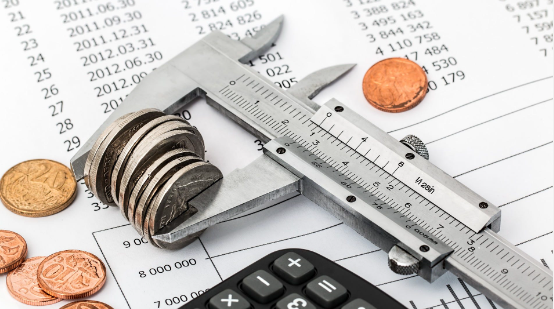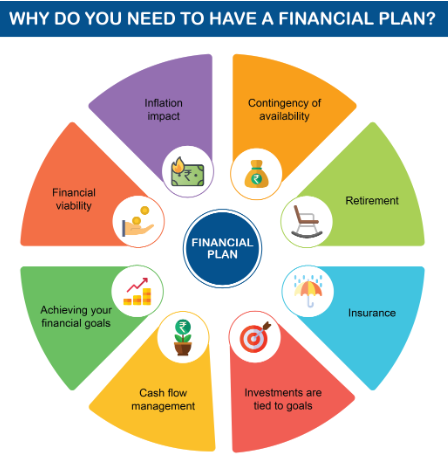How to create an annual operating budget?

Techniques for Drafting a Year-End Budget Plan
Personal financial management, company performance, and organizational development all depend on a yearly budget plan. It offers a road map for handling income, expenses, and savings, thereby guiding your decisions about money all year long. This extensive tutorial will explore successful techniques for creating a strong yearly budget plan. Whether you run a small business, yourself, or are part of a bigger company, these ideas will enable you to take charge of your money and meet your financial objectives.
Appreciating the Value of an Annual Budget Plan
One must first grasp the reasons behind the need of a yearly budget before delving into the tactics. An annual budget serves you:
Recording your income and expenses helps you better understand your financial situation and point up areas where you could be overspending or where you might be saving more.
Create and meet financial objectives. A budget helps you to create reasonable financial goals including debt reduction, future investment, or savings for a significant purchase.
Enhance Financial Decision-Making: A well-organized budget helps you decide how much to save and spend wisely, therefore lowering the possibility of financial stress and unanticipated shocks.
A budget lets you set aside money especially for savings and investments, so assuring you are ready for next financial requirements.
Detailed Guide on Developing a Workable Annual Budget Plan
Examine Your Present Financial Situation.
Reviewing your present financial condition comes first in developing an annual budget. This calls for:
- Preparing financial reports: Get your credit card, bank, and any other records 1. revealing your income and spending.
Determine Your Total Income: Add all of your sources of income that is, your pay, bonuses, investments, and any side income.
Recognizing Your Spending: List all of your expenses including variable (entertainment, dining out) and fixed (rent, utilities, insurance). - Specify Explicit Financial Objectives
A good budget plan depends on well stated financial goals. Describe your financial goals for the following year. These objectives could be:
Create a strategy to pay off loans or credit card bills among other outstanding debt.
Try to create or restitute your emergency reserve to handle unanticipated costs.
Plan for long-term savings and investing goals including buying a house or retiring.
Budget for major purchases including vacations or big home goods.
- Sort Your Outfits
Sort your spending into several categories to produce a thorough budget. Typical divisions include:
Rent or mortgage payments, insurance fees, and subscriptions are among the fixed expenses regular charges that vary little each month.
Variable Expenses: Grocery, utilities, entertainment, dining out all vary month to month.
Discretionary expenses that is, non-essential ones like hobbies, luxury goods, or non-essential services that you could change or cut out are those of which you can control.
- Establish a Budget Template.
A budget template facilitates tracking of your income and expenses. One can construct a template from:
Spreadsheets: Customizable budgeting templates abound from Microsoft Excel to Google Sheets.
Apps for budget tracking on the go include Mint, YNAB (You Need A Budget), or EveryDollar with their simple layouts.
Manual Methods: Record your financial data in a paper ledger or notepad if you would want a hands-on method.
- Sort Funds Into Every Category.
Sort money to each category based on your income and spending. This addresses:
Giving Essentials first priority makes sure you have enough money for utilities, food, and housing.
Establishing Discretionary Spending Limiters: Find out how much you can afford for non-essential purchases without compromising your financial objectives.
Changing as Necessarily Needed Change your distribution if you discover that you are overspending in specific areas.

- Track and modify your financial plan. Regularly
Making a budget calls for constant monitoring and modification; it is not a one-time chore. Review your budget often to be sure you’re keeping on target:
Monthly Review: See how your real expenditure matches your monthly budget. Point up any differences and correct as required.
Track advancement toward objectives. Review your advancement toward your financial objectives and, if necessary, change your budget.
Change with Life: Update your budget to show any changes in your financial circumstances that is, a new job, pay raise, or unanticipated spending.
- Create a safety net for unanticipated costs.
Unexpected costs can throw off your budget, hence you really need to maintain a buffer:
Establish an Emergency Fund to prevent running from your usual budget into one especially for crises.
Incorporate a contingency fund. Set away a little fraction of your income for unanticipated costs or chances.
- See Expert Advice
Consider seeing a financial specialist for complicated financial circumstances or if you are unsure about building a budget:
Financial advisers can offer individualised recommendations depending on your financial objectives and situation.
Accountants: An accountant can guarantee your budget fits your financial goals and assist with tax preparation.
Typical Budgeting Errors to Avoid
- Overvaluating Salary
Steer clear of overstretching your money. Be reasonable and build your budget on actual, trustworthy income sources. - Undervaluating Spending
Make sure you consider all of your expenses including sporadic or yearly ones. Undervaluation of expenses could cause budget deficits. - Ignoring Funds Saved
Remember the need of saving. Set aside some of your money for investments and savings to create financial stability. - Neglecting Minor Outfits
Little outlays over time might mount up. Track and balance small expenses to prevent overrunning budgets. - Ignoring Changing the Budget
Your budget should alter with the times of life. Review and change your budget often to represent your present financial circumstances.
Advice on Maintaining Your Budget
- Apply budgetary instruments.
Track your expenditures and keep orderly using apps and budgeting tools. These instruments can help you see your budget and spot areas that call for work. - Establish reasonable constraints.
Estimate reasonable limitations for every type of expenditure. Steer clear of creating too rigid, impossible to sustain budgets. - Count Your Spending
Track your spending to be sure you are following your budget. Frequent tracking keeps you responsible and facilitates necessary corrections. - Praise Yourself
Plan little incentives into your budget to reach financial benchmarks. This will enable you to remain dedicated to your budget and driven. - Remain Adaptable.
As necessary, be ready to modify your budget. Flexibility helps you to keep financial control and adjust to changes in your circumstances.
In summary
A great strategy for controlling your money and reaching your financial objectives is developing an annual budget. You may take charge of your financial destiny by evaluating your financial condition, creating well defined goals, classifying your spending, and routinely checking your budget. Steer clear of typical budgeting errors, consult experts when needed, and keep on target by using budgeting tools. These techniques will help you to design and keep a sensible annual budget plan supporting your financial well-being and long-term success.
Fabulous, what a webpage it is! This blog gives valuable information to
us, keep it up.